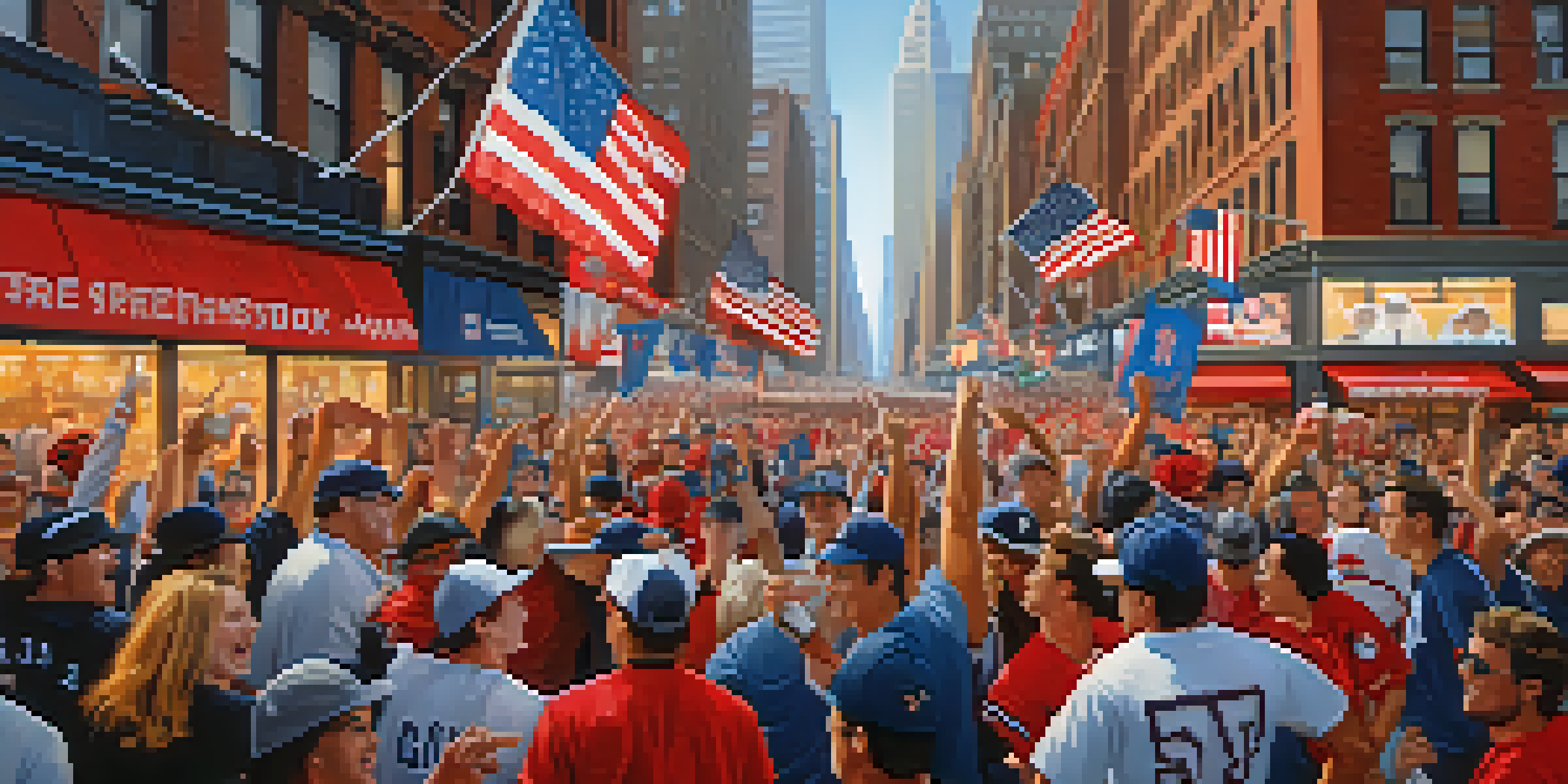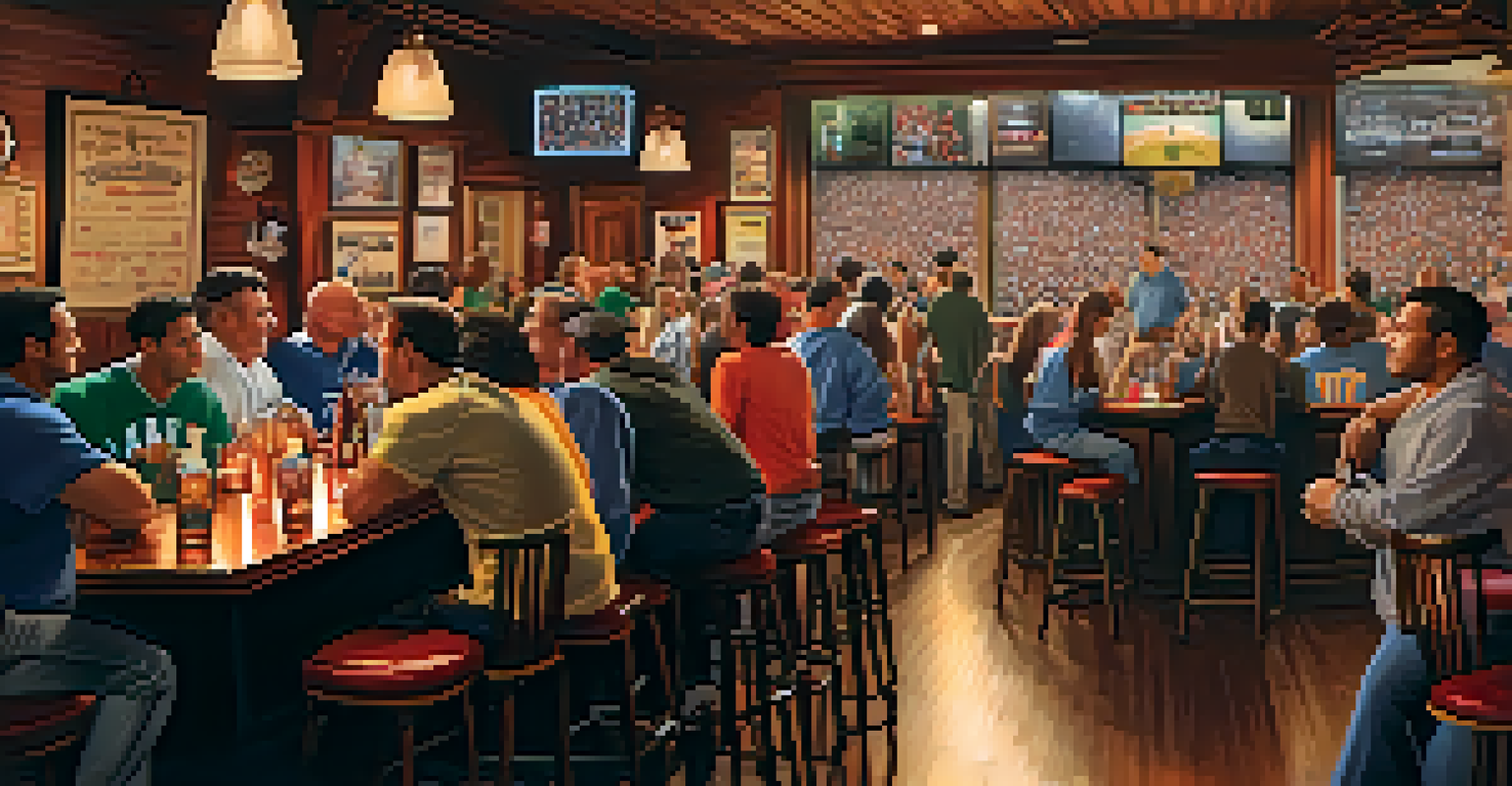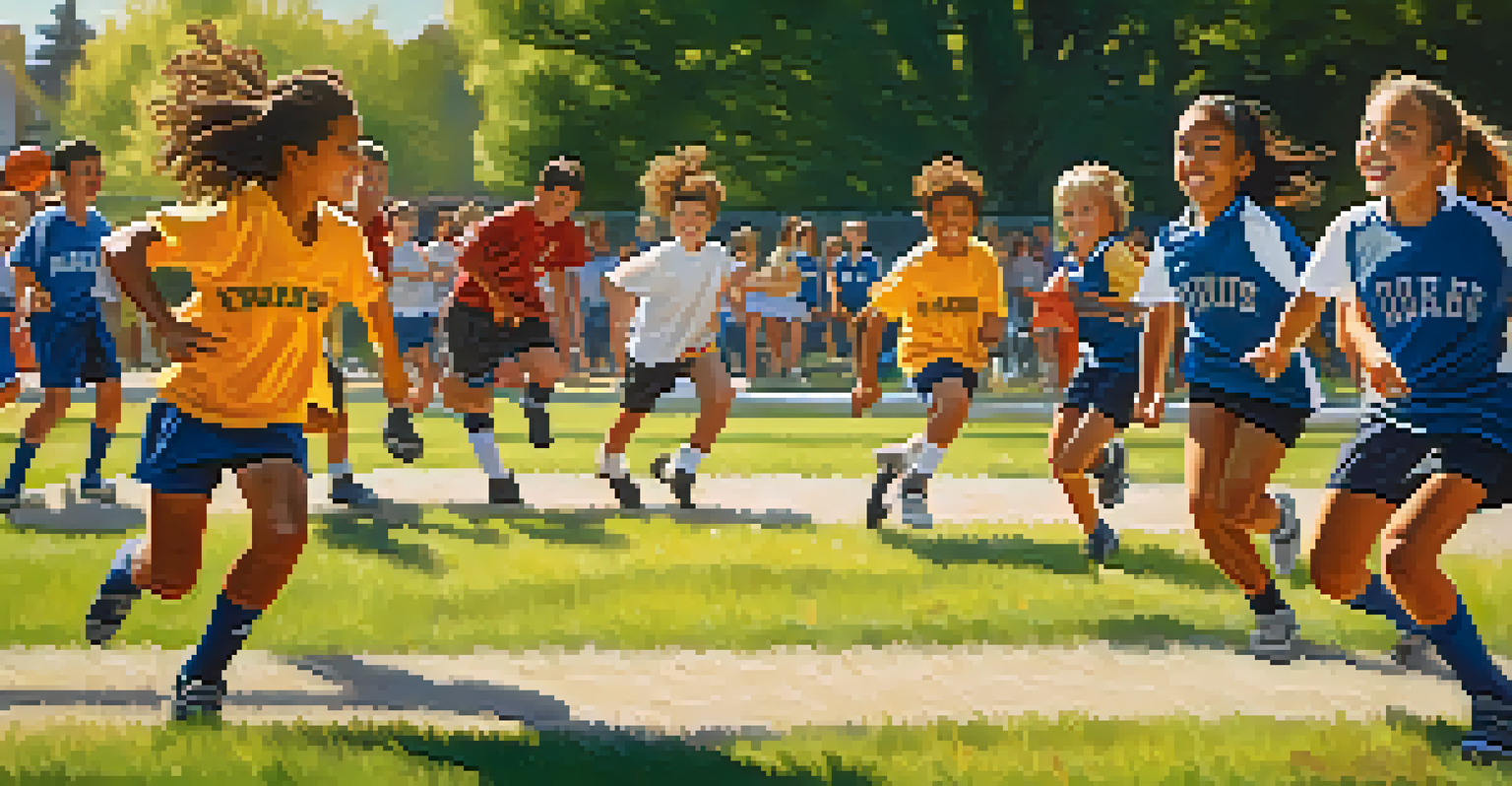Sports Rivalries and Their Role in Shaping NYC Community Pride

The Essence of Sports Rivalries in NYC
Sports rivalries in New York City are more than just games; they're a cultural phenomenon that unites communities. From the Yankees vs. Red Sox to the Giants vs. Jets, these matchups ignite passion and camaraderie among fans. They serve as a backdrop for local traditions, bringing people together to share in the highs and lows of their teams.
Sports do not build character. They reveal it.
These rivalries create a sense of belonging, as fans rally around their teams with unwavering loyalty. The excitement of a game day can turn city streets into vibrant celebrations, where even strangers bond over their shared love for a team. In this way, sports become a language of connection, transcending individual differences.
Moreover, the intensity of rivalries can inspire local pride, as neighborhoods take ownership of their teams. This pride often extends beyond the stadium, influencing local businesses and community events that celebrate team culture. In essence, these rivalries forge a collective identity that resonates deeply within the New York ethos.
Historical Context: Rivalries Through the Decades
New York's sports rivalries have deep roots, evolving over decades to reflect the changing landscape of the city. For example, the fierce competition between the Yankees and the Red Sox began in the early 20th century and has persisted through generations, fueled by legendary players and unforgettable moments. This historical backdrop adds an extra layer of significance to each matchup.

As the city's demographics changed, new rivalries emerged, showcasing the diversity of NYC's sports culture. The Nets and Knicks rivalry, for instance, highlights the boroughs' distinct identities, illustrating how sports can mirror social dynamics. These rivalries often gain momentum during pivotal moments, such as playoff runs or championship games, capturing the attention of the entire city.
Rivalries Unite NYC Communities
Sports rivalries in New York City foster a sense of belonging and camaraderie, bringing fans together to celebrate their teams.
Through this historical lens, we see how rivalries have shaped not only sports but also the identity of New Yorkers. They weave a narrative that connects past and present, making each game a chapter in the ongoing story of the city. This enduring legacy reinforces the idea that sports are a vital part of the cultural fabric of New York.
Community Engagement: Sports as a Unifying Force
Sports rivalries in NYC foster a spirit of community engagement that extends far beyond the games themselves. Local events, viewing parties, and tailgates create opportunities for fans to gather and celebrate their teams, strengthening community ties. These gatherings often include local businesses that benefit from the influx of fans, creating a symbiotic relationship.
The greatest game you can win is won within.
Additionally, sports leagues and teams often engage in outreach efforts, supporting local charities and initiatives. This sense of responsibility enhances the connection between teams and their communities, reinforcing the idea that sports can drive positive change. Fans take pride in supporting teams that give back, creating a deeper emotional investment.
The camaraderie built during these events can lead to lifelong friendships and a strengthened sense of belonging. Fans from all walks of life come together, united by their shared passion for a team. This powerful bond showcases how sports rivalries can serve as a catalyst for community pride and collective identity.
Economic Impact of Sports Rivalries on NYC
The economic impact of sports rivalries in NYC is significant, influencing local businesses, tourism, and job creation. Game days bring an influx of fans to stadiums and surrounding neighborhoods, resulting in increased foot traffic for restaurants, bars, and shops. This boost in business can be crucial for many local establishments, particularly in a competitive market like New York.
Moreover, rivalries often attract national attention, leading to heightened tourism during key matchups. Fans from outside the city flock to NYC to experience the excitement firsthand, turning games into major events. This influx can provide a substantial economic lift, benefiting not just the sports industry but the city as a whole.
Economic Impact of Rivalries
Sports rivalries significantly boost local businesses and tourism, creating economic benefits for New York City during game days.
Additionally, the jobs created around these events, from security personnel to hospitality staff, contribute to the local economy. As teams invest in their facilities and the surrounding areas, they help stimulate growth and development. Thus, the economic ramifications of sports rivalries extend far beyond the field, shaping the city's financial landscape.
Rivalries and Youth Engagement in Sports
Sports rivalries play a crucial role in engaging youth in New York City, inspiring the next generation of fans and athletes. Local teams often serve as role models for young people, who look up to players and their accomplishments. This admiration can motivate youth to participate in sports, whether through organized leagues or informal games in their neighborhoods.
The excitement surrounding rivalries provides a unique platform for youth to learn about teamwork, discipline, and sportsmanship. Local schools and community centers often host events that celebrate team spirit, fostering a sense of pride among young fans. This engagement not only nurtures athletic skills but also cultivates a sense of belonging and community.
Additionally, initiatives that promote youth sports often highlight the importance of rivalries as a source of fun and competition. By participating in these activities, young people develop friendships and learn valuable life skills. Ultimately, these rivalries contribute to a culture of active participation, ensuring that the love for sports continues to thrive in NYC.
The Role of Social Media in Sports Rivalries
In today's digital age, social media has transformed the landscape of sports rivalries, amplifying fan engagement and interaction. Platforms like Twitter and Instagram allow fans to share their thoughts, experiences, and reactions in real-time, creating a sense of community that extends beyond physical boundaries. This online presence enables fans to connect with like-minded individuals, regardless of location.
Social media also plays a significant role in shaping narratives around rivalries, with memes, highlights, and fan commentary adding layers to the conversation. This constant flow of content keeps the rivalry alive, even in the offseason, as fans eagerly anticipate the next matchup. It fosters a culture of sharing, where each game becomes an event that fans can rally around together.
Youth Inspired by Sports Rivalries
Rivalries engage and inspire young people in NYC, promoting participation in sports and building a sense of community.
Moreover, teams and players leverage social media to engage directly with their fan base, making the experience more personal and interactive. Fans feel more connected to their teams, as they receive updates, behind-the-scenes content, and opportunities to participate in discussions. This direct engagement enhances the emotional investment in rivalries, further solidifying their role in shaping NYC's community pride.
Looking Ahead: The Future of NYC Sports Rivalries
As New York City evolves, so too will its sports rivalries, adapting to new teams, players, and cultural shifts. The emergence of new franchises and changes in league dynamics can introduce fresh rivalries that resonate with younger generations. This evolution ensures that the spirit of competition remains alive and continues to inspire local pride.
Moreover, as technology advances, the way fans engage with rivalries will likely change as well. Virtual reality experiences, enhanced viewing technologies, and interactive platforms could redefine how fans experience games and rivalries, making them more immersive and engaging. These innovations may create new ways for communities to connect and celebrate their teams.

Ultimately, the future of NYC sports rivalries promises to be as rich and dynamic as its past. By nurturing these connections and encouraging community involvement, New Yorkers can ensure that their sports culture remains vibrant and integral to the city's identity. In doing so, they can continue to celebrate not just competition, but the pride that comes with being part of the world's greatest sports city.